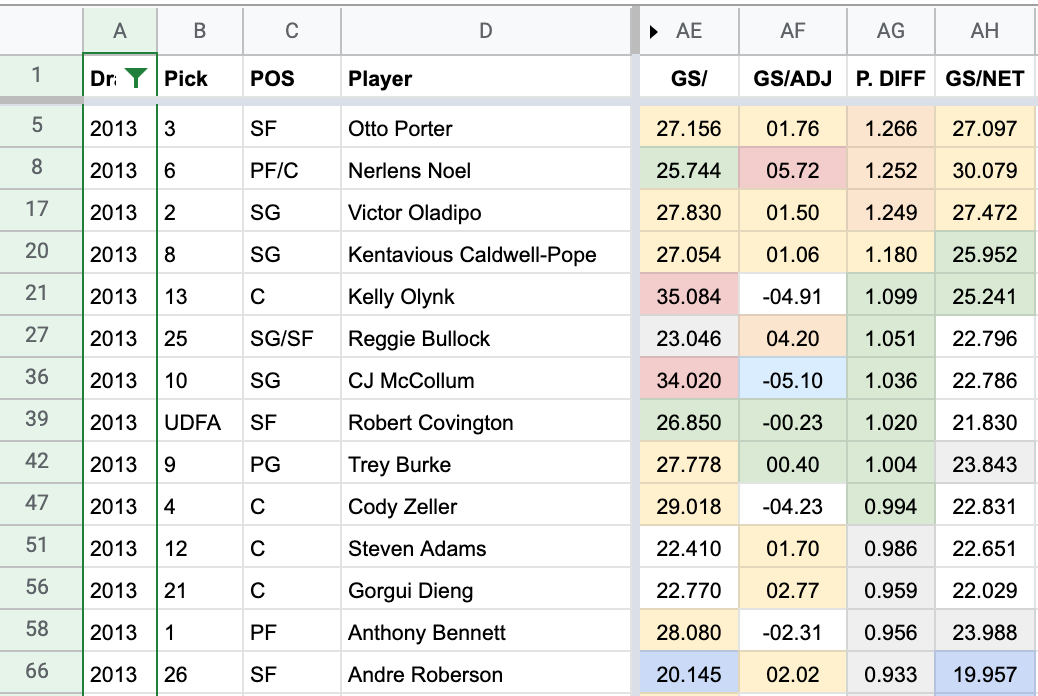I'mWithDan
"Straight Cash Homie"
- Joined
- Jul 21, 2010
- Messages
- 11,899
- Reaction score
- 24,045
- Points
- 135
Just for the sake of it, here is another look at past 15 years' draft.
What was your thought on the bucketing here? Can you speak to, for example, why the ranges are 1-3, 4-10, 11-20, etc.?
Since 2004.......my math saw:
#1 pick has produced 8 All-Stars
#2 pick has produced 3 All-Stars
#3 pick has produced 6 All-Stars
#4 pick has produced 3 All-Stars
#5 pick has produced 3 All-Stars
#6 pick has produced 2 All-Stars
#7 pick has produced 2 All-Stars
#8 pick has produced 0 All-Stars
#9 pick has produced 6 All-Stars
#10 pick has produced 3 All-Stars
#11 pick has produced 1 All-Stars
#12 pick has produced 0 All-Stars
#13 pick has produced 2 All-Stars
#14 pick has produced 1 All-Stars
It is fine if a player is a good pick........but not all good picks are created equal.......and while Giannis' happen......the easiest route to an All-Star is still having a top pick.
The lottery has produced 40 All-Stars since 2004.......58% of them came from top top 5, which is only representative of 35% of the lottery selections. 32% of them came from picks 6-10, which is again, representative of 35% of the lottery selections. The last 10% came from picks 11-14, which is representative of 30% of the lottery selections.
1-5: 58%
6-10: 32%
11-14: 10%
That is such a steep, steep drop when bucketing the picks at top of the top 10, bottom of the top 10 and remaining lotto. Especially when considering these 11-14 numbers ballooned recently with Booker, Bam and Mitchell.
There are certainly players who beat the odds......but when nearly 2/3 of the All-Stars come from the top 5 picks vs 6-14, that is such a massive gap statistically......especially when you consider that picks 6-14 represents a pool of nearly twice as many players (80 selections in the top 5, 144 in picks 6-14) . So even with that large difference in quantity, it still produces a large value gap in the number of good, available players outside the top 5.
Last edited:


 Nice to see Bey getting some love though.
Nice to see Bey getting some love though.